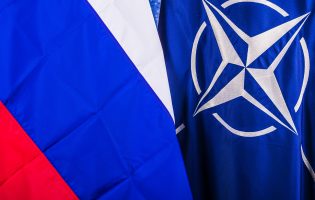German & U.S. Domestic Counterterrorism Responses
On June 8, 2009, AGI and DAAD sponsored a discussion on German and U.S. domestic counterterrorism responses. Dr. Dorle Hellmuth, DAAD/AGI Fellow, gave a presentation on the issue and Dr. Jackson Janes moderated the subsequent discussion. Most participants concurred with Dr. Hellmuth’s argument that German and U.S. domestic counterterrorism responses show similarities, and that both countries can learn and benefit from each other’s experiences regarding counterterrorism coordination, information-sharing, as well as intelligence collection, analysis, and dissemination.
Dr. Hellmuth began her assessment of domestic counterterrorism responses in Germany and the U.S. by introducing the three main themes of her research findings:
German and U.S. approaches to domestic counterterrorism are quite similar;
Different political systems (parliamentary vs. presidential systems) hold an important key to explaining the differences that exist; and
Germany and the U.S. can learn and benefit from each other’s experience because both countries have decentralized political and security structures.
Dr. Hellmuth then moved on to discuss these themes in more detail and concluded that in the transatlantic debate about counterterrorism responses, differences are often exaggerated and stereotypes encouraged. She further stressed that Germany and the U.S. can learn much from each other, as they face similar challenges and have adopted similar objectives and approaches.
In the aftermath of 9/11, both Germany and the U.S. realized the need to streamline counterterrorism coordination and improve information-sharing among security agencies. For example, in Germany, a total of 32 state law enforcement and intelligence agencies were brought together with their federal counterparts to form the Joint Counterterrorism Center (Gemeinsames Terrorismusabwehrzentrum, or GTAZ) in 2004. In 2007, it was further complemented by a joint counterterrorism database, which can be accessed by selected state and federal counterterrorism services. Similar to several new fusion centers that emerged at the state level, the new GTAZ and database were also designed to bridge the divide between law enforcement and intelligence agencies. In the U.S., the Department of Homeland Security and the Office of the Director of National Intelligence were established in 2002 and 2004, respectively, to strengthen interagency coordination across the federal government. In addition, the Terrorist Threat Integration Center (TTIC) (which became the National Counterterrorism Center (NCTC) in 2004) and the Terrorist Screening Center (TSC) were created in 2003. These federal efforts, designed to facilitate information-sharing and all-source analysis, have also been supplemented by new fusion centers in many of the 50 states.
Dr. Hellmuth argued that the similarities in both countries’ approaches to domestic counterterrorism are not coincidental. Both countries feature fragmented security structures with strong competition among the many interagency players, as well as between state and the federal government levels. Nevertheless, there are differences in terms of how counterterrorism decisions are made in each country. While the competition between the president and Congress shaped reforms to a great extent in the U.S., the powerful states and their veto power in the Bundesrat influenced outcomes significantly in Germany. In her final argument, Dr. Hellmuth made a case for the importance of acknowledging and understanding the similarities in both systems. As a federal state, the U.S. faces similar challenges in trying to connect federal and state counterterrorism agencies. As an example of best practices, she noted the make-up of the German counterterrorism center, which managed to integrate the states into the (federal) information-sharing and analysis structures. It is of particular note that the GTAZ also includes judicial and foreign law enforcement representatives. According to Dr. Hellmuth, the fact that both countries have established state-run fusion centers holds valuable lessons for either side. The U.S. could also benefit from the longstanding German experience with data mining programs.
The presentation was followed by a lively discussion between Dr. Hellmuth and participants from various homeland security and intelligence backgrounds; several participants shared some of their own professional experiences, as well as alternative points of view. They further emphasized the importance of personal relationships needed to make institutions like the NCTC and GTAZ work. It was argued that a fair amount of operational collaboration between the two governments is already ongoing. Another point was made that the question remains of who is ultimately in charge of coordinating counterterrorism agencies, especially in the U.S. Germany’s reforms in the counterterrorism realm were generally praised as solid.







